Whether you live in the subtropical regions of Australia or are simply trying to battle the intense summer sun in another part of the country, your single pane windows are both your property’s biggest insulation problem and its solution.

The best way to block heat from windows is to have your current windows properly – and professionally – retrofitted. That’s right. Retrofitted, not replaced. You don’t have to make a huge investment in installing new double glazed windows to get the superior window heat insulation you are after. Better energy efficiency, a comfortable interior, even when that hot Aussie sun is blazing outside, all of this can be achieved by converting your single pane windows. You’ll also benefit when the temperature drops in winter; the best way to insulate windows for summer is also your ideal thermal solution for winter.
Now, isn’t that good news! And, you’ll enjoy another priceless benefit of insulated windows – peace and quiet. When you stop heat from coming in windows, you’ll also block out a lot of the noise pollution you probably deal with on a daily basis (unless you live on your own private island). Here’s how it works.
How to Insulate Single Pane Windows for Summer
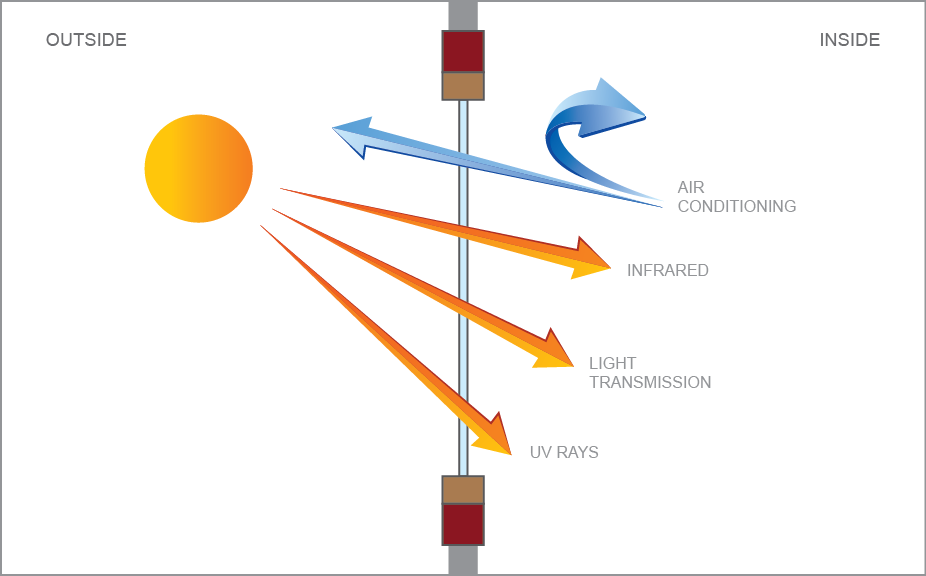
There are plenty of ways to lessen unwanted solar heat gain. Anytime you create shade to stop sunlight from reaching your windows or put up material on or over your single pane of glass, you’ll reduce the sun’s onslaught somewhat. However, at about 14 million degrees Celsius at its core, your DIY heat insulation for windows isn’t going to make a big difference. In order to achieve substantial results – lowered energy bills, a pleasant interior, the ability to let the natural light stream in without worrying about turning your home into a heat sink – you’re going to have to retrofit that single pane of glass into a double glazing unit.
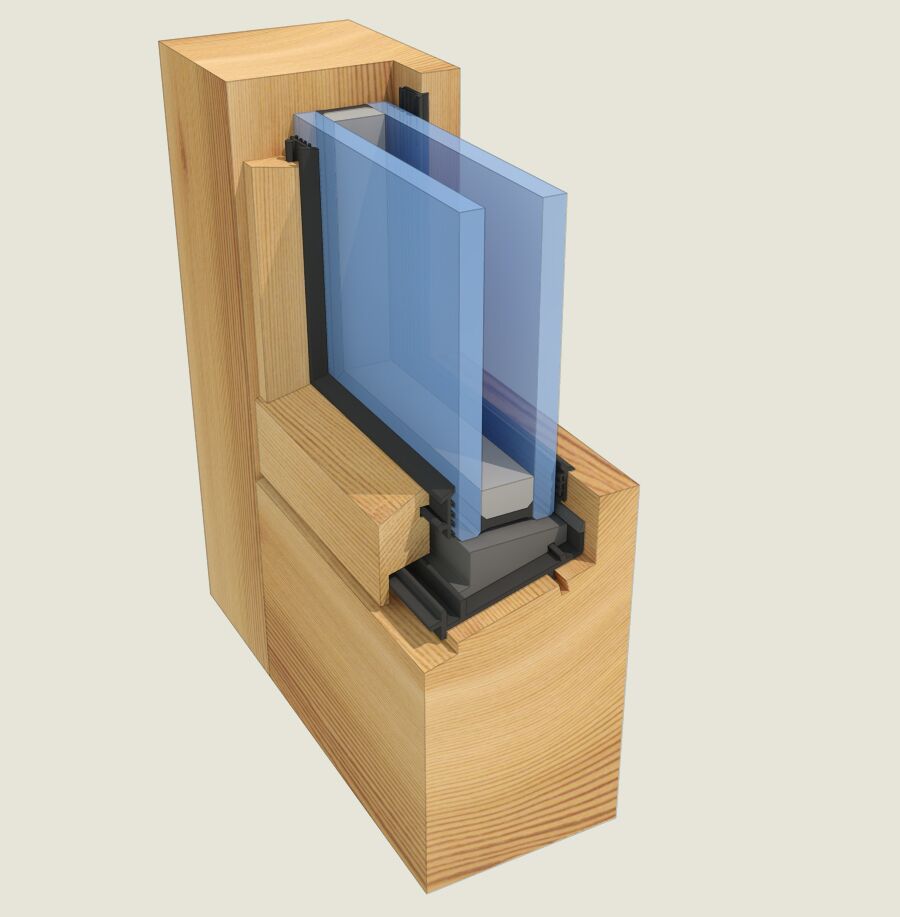
Two panes of glass with an air space in between. That’s what a double glazing unit is. The dynamic between the panes of glass and the small space can block solar heat, stopping it from penetrating into your home. A single pane, on its own, will always need to radiate the heat energy it absorbs from the sun. Meaning, even if you ‘insulate’ it with plastic, window dressings or other materials, that heat energy is still going to seep through without a professionally sized and sealed air gap of a double glazed unit.
The Low E Factor
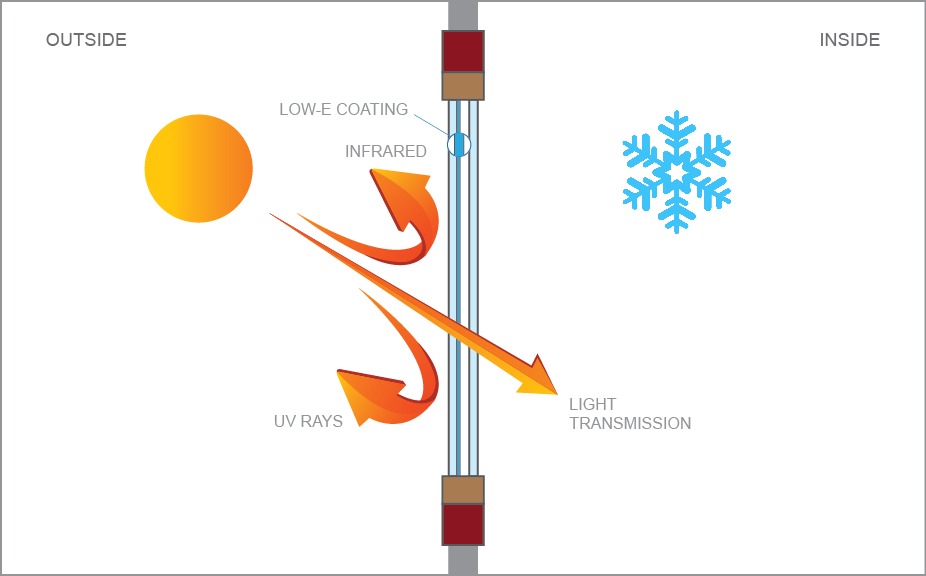
When you retrofit your existing windows, replacing the single pane of glass with a double glazed unit, you also have the opportunity to choose the type of glass you’d like to use. Using thicker glazing or a specialised pane of glass can help you achieve much better results. The best way to reduce heat from windows is to use a special type of glass known as low E, for low emissivity. What low E glass does is it reflects the sun’s infrared light – which is the sun’s heat energy – back in the direction it came from. It does this whilst, at the same time, letting the visible light spectrum (your gorgeous natural sunlight) in. As a result, in the summer heat energy is reflected away from your glass, preventing the window from getting hot and radiating unwanted heat energy into your home.
- What about low E glass in the winter?
- How can you stop heat from coming in the windows whilst still keeping it cosy inside during the colder months?
Low e glassworks year-round to keep your interior comfortable. In the cold, that same low E principle works to your advantage, reflecting your home’s heat energy back inside, just where you want it.
How to Block Sun Heat from Windows the Efficient Way
The beauty of retrofitting your current windows – keeping the same timber windows and only replacing the glass – is that you can achieve fantastic summer insulation benefits, along with the other advantages of having double glazed windows, at a lower price. It’s possible to do this for about one-third of the cost of getting new double glazed windows installed in your home. This means you get all the good stuff, without breaking your budget. At the same time, you’ll increase the value of your property. With society’s greater focus on energy efficiency and lowering energy costs, well-insulated windows that also look amazing are a huge bonus.
Retrofitting is also perfect for older buildings and heritage-listed homes. With a professional retrofit, you get to maintain the original character and functioning of your windows. In fact, Thermawood window professionals are known for handling older, complex heritage windows well, including double-hung or sash windows, and are approved by Heritage for Grade 1 and State-Listed properties.
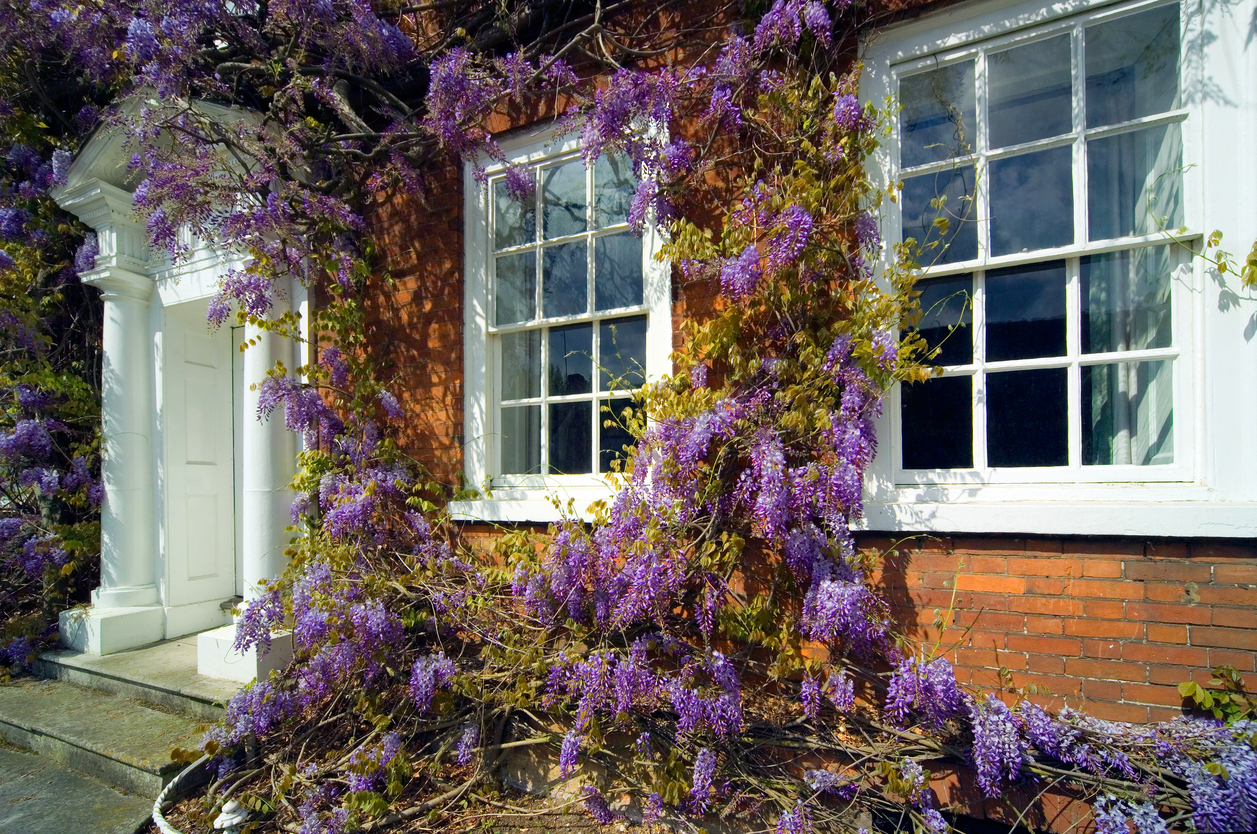
As one recent customer noted,
“(Our) two windows were challenging, one is a box window, both turned out to be very finicky and (the team) went to great efforts to make sure we ended up with a really great outcome.”
Thermawood uses an innovative, patented dry retrofit system, which ensures the windows look and function beautifully after being retrofitted. Ensuring the window beads are on the same angle and sit in the same place as the existing heritage window, working to retain every nuance of the original character, and excelling at bringing heritage windows into the 21st century. It is also specially designed to prevent moisture build-up around your windows, helping to keep them in excellent condition for years to come. Thousands of Australians are already experiencing the heat insulation benefits of retrofitting with Thermawood’s advanced process. When it’s a win all-round – a comfortable home, a serene, quiet interior environment, an affordable price and you don’t have to sacrifice the lovely aesthetic of your heritage windows – retrofit double glazing isn’t just the best way to block heat from windows. It will transform the way you experience your home.
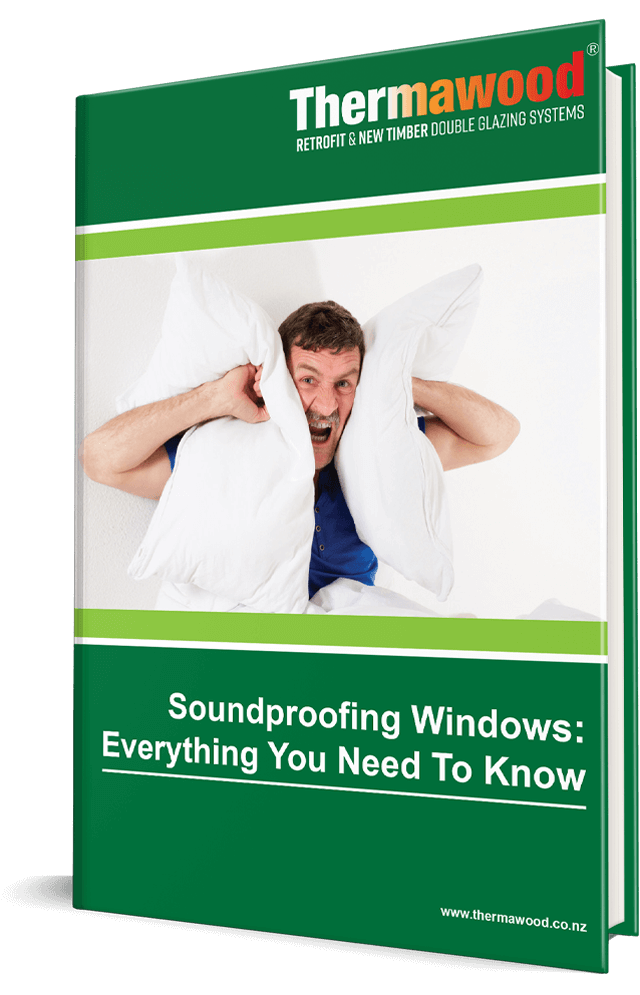
[Free Guide]
Learn All About Reducing
the Noise Entering Your Home
or Building

![Best Way to Block Sun Heat from Windows [Professionally]](https://www.thermawood.co.nz/wp-content/uploads/2020/06/best-way-to-block-heat-from-windows-1.png)